Won’t you look down upon me, Jesus
You’ve got to help me make a stand
You’ve just got to see me through another day
My body’s aching and my time is at hand
And I won’t make it any other way
Oh, I’ve seen fire and I’ve seen rain
I’ve seen sunny days that I thought would never end
I’ve seen lonely times when I could not find a friend
But I always thought that I’d see you again
Been walking my mind to an easy time my back turned towards the sun
Lord knows when the cold wind blows it’ll turn your head around
Well, there’s hours of time on the telephone line to talk about things
to come
Sweet dreams and flying machines in pieces on the ground
( James Taylor, Fire and Rain )
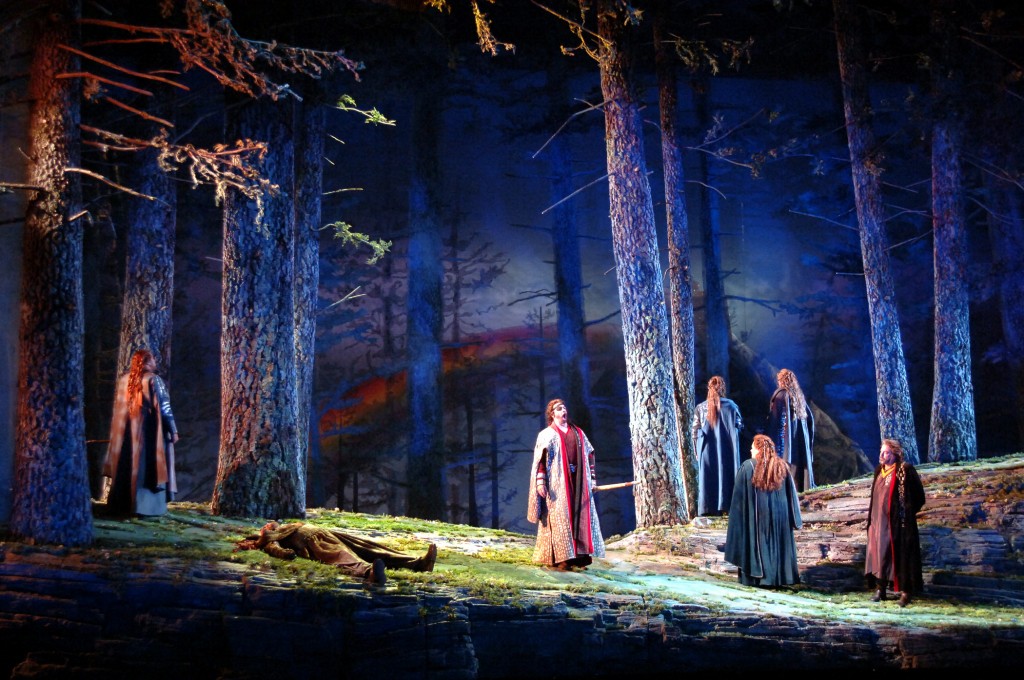
Wagner. Rheingold. ''Seattle Opera presents its production of the RING in the company's state-of-the-art home, Marion Oliver McCaw Hall. ''
The difficulty in understanding Wagner, is that Wagner did not understand himself particularly well. Like his one time friend Nietzsche, the point of departure was based on assumptions; namely that world, in its totality was ”efficient” , it so called ”operating system ” , nature in general was bound by certain immutable laws to reach an equilibrium. Secondly,that man, or humankind, was rational; there might be blips of irrationality, but the two assumptions were that man would act rationally in a world that was by nature efficient. On the basis of these ”natural” laws man could project himself onto the world without doubt or question.That certainty was never in doubt was the due of man, and since doubt did not exist it could never bring certainty. Hence, no uncertainty, then no need for faith in the view of Wagner.
But, as was obvious to many, Wagner was a deeply flawed individual, invaded by a self-hatred in tenuous synchronicity with his bubbling narcissism. His popularity based in equal part on his notoriety which traversed a grey zone between heroism and idiocy, the genius and the comic tragedy. Flashes of explosive brilliance between long interminable periods of seething boredom. In his way, Christianity was critiqued as a the foundation of materialism; somewhat similar to the ”heretics” claiming that the rich cannot enter the kingdom of heaven without first disposing of their riches. But, the issue itself was deeper and more complex than Wagner seemed to care to delve into, or at least Wagner’s dabblings in pseudo-anarchism.
Wagners productions, have always posed insoluble staging problems over the years. The conceptual base of his grandiose departures were constantly limited by the physical restraints of staging and production for a mass audience. In the ”Ride of the Valkyries” , Alfred Roller, Gustav Mahler’s celebrated stage designer constructed a sort of merry-go-round and placed chorus boys dressed up as Valkyries on wooden horses. While the stage hands turned the merry-go-round , there were awesome bolts of lightning and deafening crashes of thunder. The action took place behind a dark veil. Through openings in the veil the enchanted public could see the ”Valkyries” galloping away. Viennese Wagnerians called it the ”greatest ride outside of Bayreuth” . There, under the severe stare of Frau Cosima, real horses were still used in obedience to the master’s sacrosanct, and meticulous stage instructions. Ten years later, Roller designed a new ”Walklure” production, this time using papier mache figures of flying horses, early Mobiloil style, and sexy pin-up Valkyries . Their contours were dramatically silhouetted against a white backdrop and lighted by flashes.
The Rhine Maidens in ”Rheingold” was another irreconcilable staging issue over many decades. In the early years of the century special flying machines were built for the three Rhine Maidens at the Vienna Opera. The machines, and the well-fed ladies who sang the parts of Woglinde, Wellgunde and Flosshilde, were hung on steel cables from the rigging loft and swung about over the darkened stage. The cables had to be tested carefully before each performance, but Gustav Mahler was not happy because the singers became frightened and airsick, and often missed their cues. In a later production the singers were placed behind rocks, to be heard but not seen, while slim members of the ”corps de ballet” were whirled through space. The dancers wore costumes decorated with phosphorescent paint and had orders to move their lips as though they were singing.
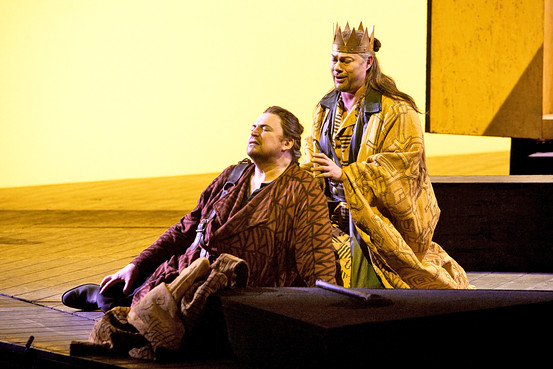
''While Wagner's operas are not overtly anti-Semitic, certain of them, "Die Meistersinger" in particular, are intensely nationalistic, and some critics and scholars have argued that their German nationalism has anti-Semitic implications that Wagner expected to be understood by German-speaking audiences.''
Wagner operas were often staged in a backward way that exuded a museum like flair; realistic and stylized elements mixed together, foolish sets and ludicrous rock fo
ions; a juxtaposition that highlighted what Wagner said about conducting and staging being arts which excluded each other. Music is basically an introverted art and staging an extroverted one. Richard Wagner could well have conducted the first ”Ring” in Bayreuth , but he wisely limited himself to the staging and let Hans Richter conduct.
Over time, it has been proven there are elements of Wagner’s work that are timeless and timely drama. Wagner’s prophetic vision held up a mirror to the German people. Wotan, surrounded by Valhalla’s walls and noble leitmotivs , emerges as a supergangster. He orders a castle he can’t afford, commits robbery to pay for his debt, cheats and lies, breaks promises to get the ring to gain power over the world, and banishes Brunnhilde, who might have saved him. And Siegrfied, the ideal Aryan type, all muscles and no brains, runs out on Brunnhilde and is poisoned and brainwashed by the Gibichung crooks. During two acts of ”Gotterdammerung” Siegfried is drugged, a handicap, at the least, for an intelligent actor-singer. Only shortly before his death does he become lucid again and briefly emerge as a great tragic figure.
Certain of Wagner’s heretical theories shattered, or were in contradiction to the romantic illusions that pushed up around him like weeds. Yet, the parallels are there. Wagner’s Wotan appeared half a century before Hitler committed every possible crime ”to gain the world” . hagen and his storm troopers were on Bayreuth’s stage long before the days of Himler and the S.S. Yet, most people attend Wagner performances for the romantic music and not for the intellectual truth , yet there is truth even in Richard Wagner’s music. In Tristan and Isolde a conclusion may be drawn that the work’s central theme is not the death wish but a glorification of ecstasy. It’s all in the score; Isolde,s last words are not of death but ”hochsre Lust” – ”the highest passion”
The musical truth is not in the leitmotivs that are central to the cult of Wagnerians, but in the musical keys. Each of his mature works is characterized by such a key. Rheingold by E flat major, Walklure by D minor, Siegfried by C major, and so on. The E major key expresses erotic love; F major; love of one’s country; and the demoniac D minor key appears both in Walklure and Tristan when the hero is doomed. And between the Lohengrin Grail in A major and the Parsifal Grail in A flat major there is the progression of a lifetime of genius.
”Fassbinder’s farce does, like traditional clowning, assault language without arguing for its recuperation — for language was inadequate to begin with. But the irrational bodily energies that the Marx Brothers found so liberating are in Satan’s Brew addictive, appetitive dead-ends. Interestingly, the optimistic ideology of clowning finds unexpected resonance in the didacticism of Syberberg, who suggests that a positive irrationality can counteract a negative one:
”We know about the glory and misery of irrationalism; but without it, Germany is nothing but dangerous, sick, without identity, explosive — a wretched shadow of its possibilities. Hitler is to be fought, not with the statistics of Auschwitz or with sociological analyses of the Nazi economy, but with Richard Wagner and Mozart.”
For Syberberg, not only must Wagnerism be rescued from Nazism, but we must be freed from the ideology that falsely equates the cathartic irrationality of the one with the more dangerous irrationality of the other. Exactly how aesthetics can be sifted and detached from politics remains murky; nevertheless, the ways in which Syberberg continues, within the context of his Hitler, offer a trenchant (if not wholly convincing) counterpoint to Satan’s Brew: “I would like to define this irrationalism as the ultimate principle of infinity in our art, the indissoluble, the homesickness, the yearning for meaning in madness, in the cinematic artwork, and a nation’s desire for representation, a desire for myth.’ ”
”Hitler was an aesthete who knew Wagner’s operas very well. He was close to the composer’s family and, after he came to power in 1933, he made sure that Wagner’s music was prominently featured at Nazi Party functions.
Wagner, needless to say, wasn’t a Nazi. He died five years before Hitler was born. But his hatred of the Jews, like Hitler’s, was more than a mere tic: It lay at the heart of his megalomaniacal vision of the world. Wagner considered himself to be both a great composer (which he was) and a great political philosopher (which he wasn’t), and the doctrine he preached was that of German racial purity and triumphalism. To be sure, you won’t find explicitly anti-Semitic language in the texts that he wrote for his operas, and he worked closely with a few Jewish musicians. But when it came to Jews in general, Wagner believed that they were a “swarming colony of worms in the dead body of art” and that only one thing could redeem them from “the burden of curse — total annihilation.” ( Terry Teachout WSJ )
Wagner, unavoidably, left a certain legacy of the irrational; and the element that has received the most attention is that of a social sadomasochism underlining the cult of fascism. as he held up a mirror to Germans, he also held it up to the world at large, and it is perhaps our own gaze that is most disquieting.



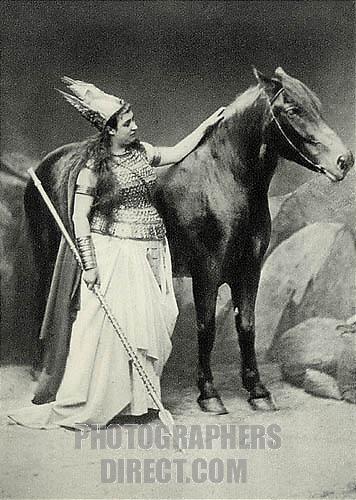
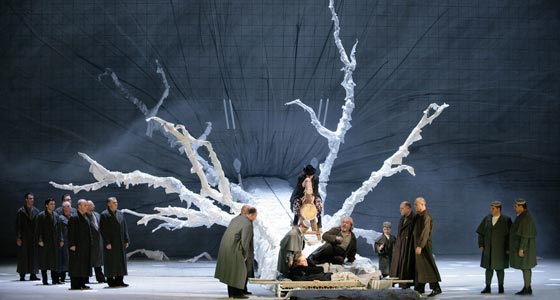
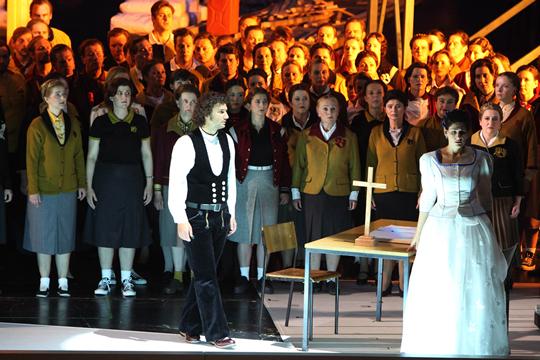
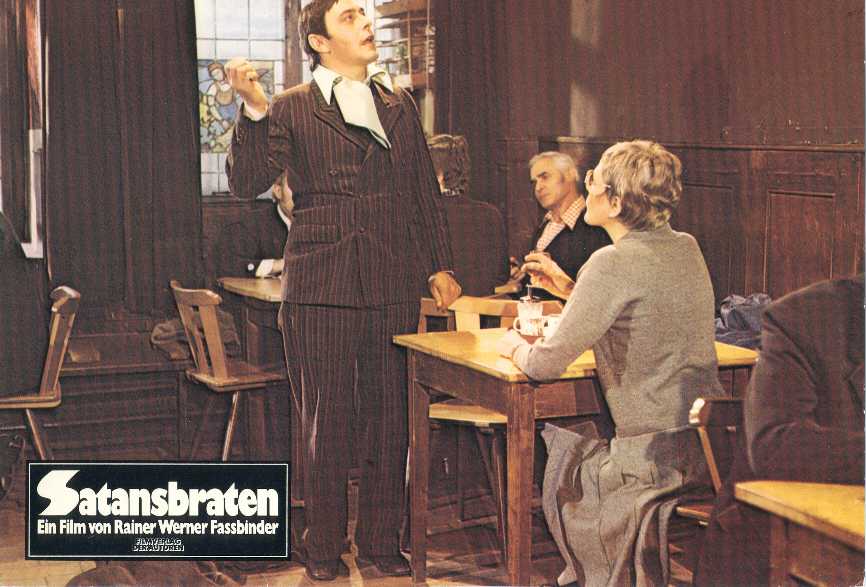




 COMMENTS
COMMENTS




+
“YHWH,you have probed me,and you know me.
You know when I sit and when I stand up,
you discern my inclinations from afar,
you scrutinize my daily activities.
You are familiar with all my ways
that before I speak even a word,
you know all about it allready.
You have hemmed me in both behind and in front
and laid your hand on me.
Such wonderful knowledge is beyond me,
far me to reach.
Where can I go to escape your Spirit ?
Where can I fle from your presence ?
If I climb up to heaven,you are there;
If I lie down in Sh’ol , you are there.
If I fly away with the wings of the dawn
and land beyond the sea,
even there youre hand would lead me,
your right hand would hold me fast.
If I say “Let darkness surround me,
let be light around me be night “.
even darkness like this
is not to dark for you;
rather,night is as clear as day,
darkness and light are the same.
For you fashioned my inner being,
you knit me together in my mother ‘swomb.
I thank you because I am awesomely made,
wonderfully;your works are wonders-
I know this very well.
My bones were not hidden from you
when I was being made in secret,
intricately woven in the depths of the earth.
Your eyes could see mee as an embryo,
but in your book all my days were already written;
my days had been shaped
before any of them existed.
G_D,how I prize your thoughts !
How many of them there are !
If I count them ,there are more than grains of sand;
if I finish the count,I am still with you.
TEHILLIM:139
YAHSHUA (Jesus) said:”In my Father’s house are many places to live…….Since I am going there to prepare a place for you,I will return to take you with me;so that where I am ,you may may be also.
Furthermore,you know where I’m going;
and you know the way there.”
T’oma said to him,”Lord,we don’t know where you’revgoing;so how can we know the way ?”
YASHSHUA said,”I AM the Way- and the truth and the Life;no one comes to the Father except through me.Because you have known me ,you will also know my Father;from now on you do know Him-in fact ,you have seen Him.”
YOCHANAN:14:1-8